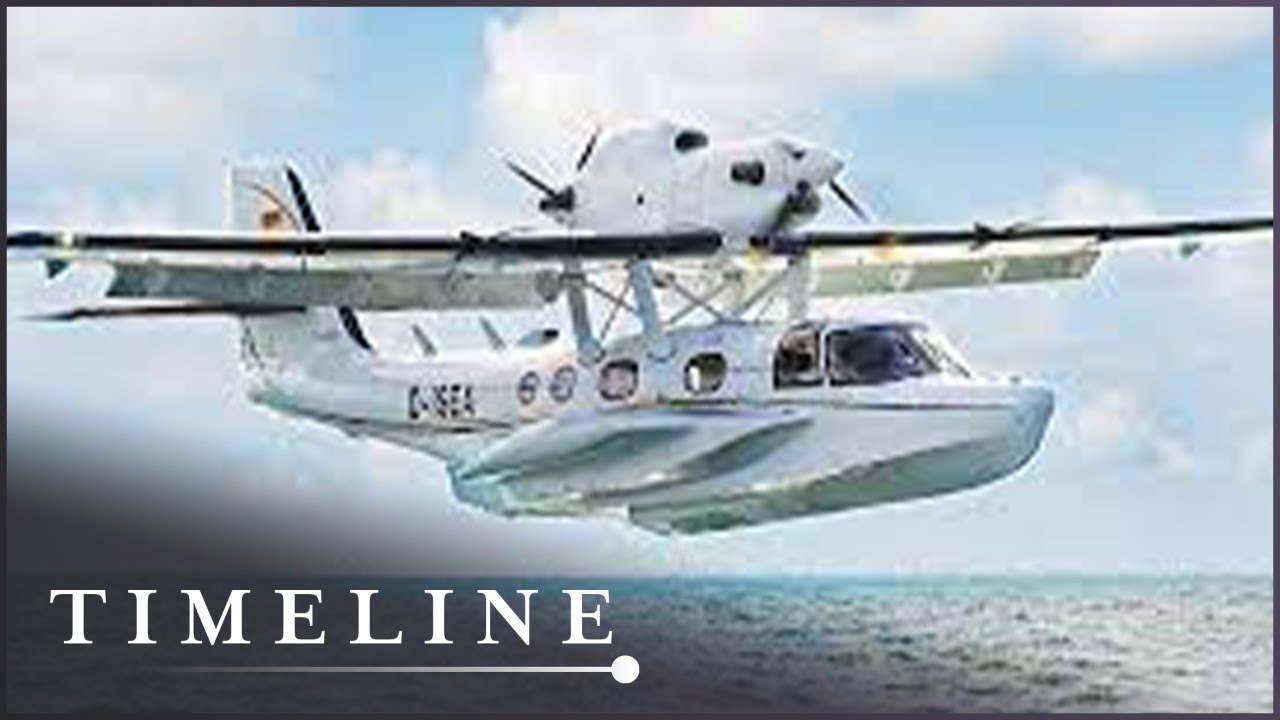During World War II, the Royal Air Force (RAF) relied heavily on its fleet of flying boats for reconnaissance and transport missions. These massive aircraft were capable of landing on water, making them ideal for operations in remote locations and over water. While their contributions to the war effort were significant, the story of the RAF’s flying boats remains largely untold.
The development of the flying boat can be traced back to the early days of aviation, when pioneering pilots experimented with the idea of using aircraft to travel over water. By the 1930s, flying boats had become a popular choice for long-range flights and military operations, thanks to their ability to take off and land on water.
During World War II, the RAF operated a number of different flying boat models, each with its own unique capabilities. The Short Sunderland, for example, was a massive aircraft that could carry up to ten crew members and had a range of over 2,000 miles. It was primarily used for maritime patrol and anti-submarine warfare, and played a crucial role in protecting Allied shipping convoys.
The Consolidated Catalina was another popular flying boat used by the RAF, particularly in the Mediterranean and Pacific theaters. It had a range of over 4,000 miles and could stay airborne for up to 24 hours, making it an ideal choice for long-range reconnaissance missions.
The flying boats’ versatility made them ideal for a variety of missions beyond their traditional roles. Some were used for search and rescue operations, while others were converted into transport planes, capable of carrying troops and supplies over long distances.
Despite their usefulness, the RAF’s flying boats faced significant challenges during the war. One major issue was their vulnerability to enemy attack, particularly from fighter planes and anti-aircraft fire. The aircraft’s size and slow speed made them easy targets, and many were lost in combat.
Another challenge was the limited number of bases from which the flying boats could operate. Because they required large bodies of water for takeoff and landing, the RAF had to rely on a small number of coastal bases, making it difficult to deploy them quickly to different locations.
Despite these challenges, the RAF’s flying boats made significant contributions to the Allied war effort. They were used to transport troops and supplies to remote locations, conduct reconnaissance missions, and protect Allied shipping from enemy attacks.
The RAF’s flying boats have played a significant role in the history of aviation and maritime operations. Between the World Wars, the RAF used these elegant and advanced aircraft to patrol the vast and remote territories of the British Empire. They were particularly useful in coastal areas where traditional aircraft were limited by the lack of suitable runways.
During World War II, the RAF’s flying boats played a critical role in air-sea rescue operations, providing vital support to downed pilots and aircrews. These large and powerful aircraft, such as the Short Sunderland and PBY Catalina, were capable of flying long missions over vast distances, searching for enemy submarines and rescuing stranded personnel.
The flying boats were also used for reconnaissance and anti-submarine warfare, particularly in the Atlantic and Pacific theaters. They played a crucial role in disrupting enemy supply lines and protecting allied shipping, often working in conjunction with other air and naval forces.
One of the most significant operations involving RAF flying boats was the Battle of the Atlantic, where they played a crucial role in the struggle against German U-boats. The flying boats were instrumental in locating and attacking U-boats, and in escorting convoys of vital supplies and troops across the Atlantic.
In addition to their military roles, RAF flying boats also made significant contributions to civilian aviation. They were often used for long-range passenger and mail services, particularly in remote areas where other forms of transport were limited.
Despite their important contributions, the RAF’s flying boats are often overlooked in the history of aviation and military operations. However, their impact on the development of air-sea rescue, reconnaissance, and anti-submarine warfare cannot be overstated. They played a significant role in securing victory in World War II and paving the way for future advancements in aviation technology.
Today, the RAF’s flying boats are remembered as a remarkable feat of engineering and a symbol of the bravery and dedication of the pilots and crew members who flew them. While their story has been largely overlooked in the history of World War II aviation, their contributions to the war effort were invaluable.
In recent years, there has been renewed interest in the RAF’s flying boats, with enthusiasts and historians seeking to preserve their legacy. Many of the surviving aircraft have been restored and are on display in museums around the world, providing a glimpse into this fascinating chapter in the history of aviation.
In conclusion, the RAF’s flying boats were a vital part of the Allied war effort during World War II. Their versatility and range made them ideal for a variety of missions, and their contributions to the war effort were significant. Despite facing significant challenges, the pilots and crew members who flew these massive aircraft demonstrated remarkable bravery and dedication, and their legacy continues to inspire aviation enthusiasts and historians today.


